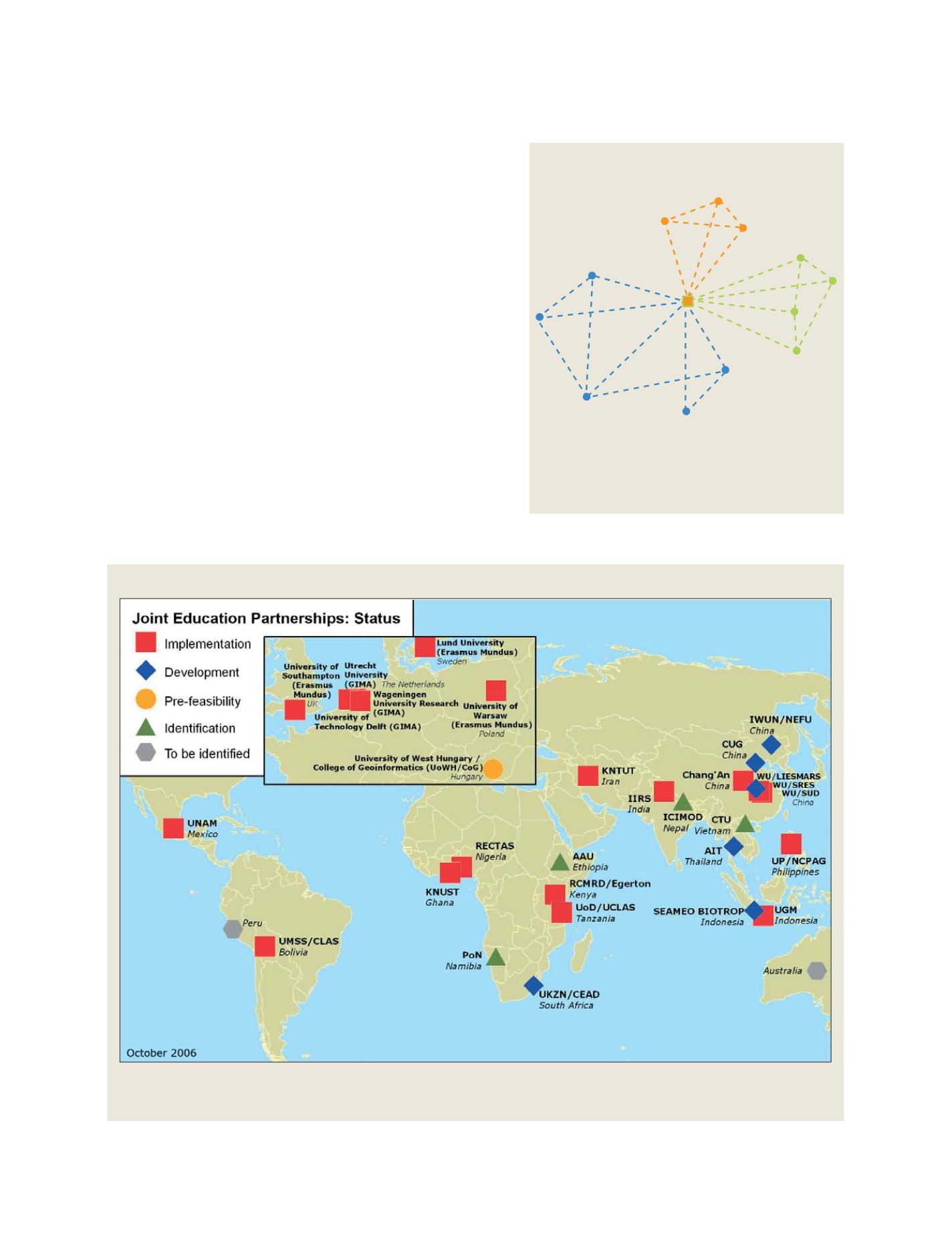

[
] 123
joint education programme. This is a multilateral arrangement, where
most likely not all partners will enter at the same time. Also, such a
network would need to be dynamic so that partners come and go
over time. In that case a multi lateral agreement might not be the
proper institutional base. A more suitable idea is a charter drawn up
by the founding partner, so that parties joining the network at a later
stage can sign up to it later.
This charter should specify the domain in which such a virtual
university will provide educational services, the type and content
of the programmes and courses it will deliver, and how to evalu-
ate their market relevance. It should specify the building blocks of
these courses and units applied in its credit transfer system.
Quality standards have to be specified and procedures for quality
assurance and control (for example, internal – in the network –
and external peer reviews) and choices should be made for accred-
iting organizations. The financial arrangements should be
formulated, including course fees and financial compensation for
marketing activities, course contributions and administrative
support.
The road to a virtual university for Earth Observation and Geo-
Information Science is certainly a long one. But there are good
examples in other domains, and the present GEOSS process provides
an ideal and unique opportunity for such an initiative.
Source: ITC
ITC has developed partnerships with universities and institutes on four different continents to deliver joint educational programmes
and provide educational services
GI-NET, ITC’s international network of partnerships for joint education
These networks are connected because they have ITC as a
common node, and through this position ITC can transfer
experience and knowledge between networks
Linked networks
Source: ITC
















